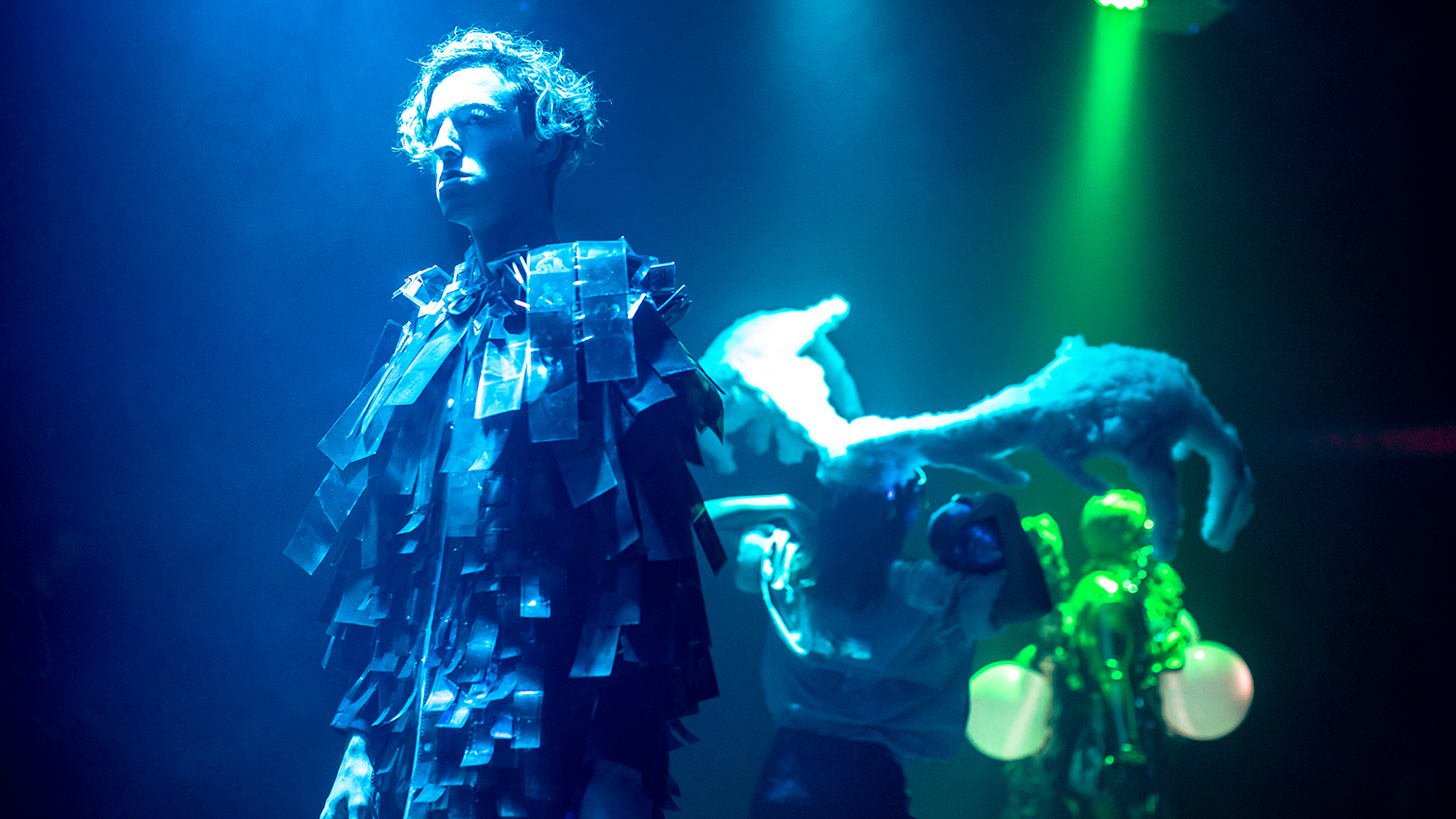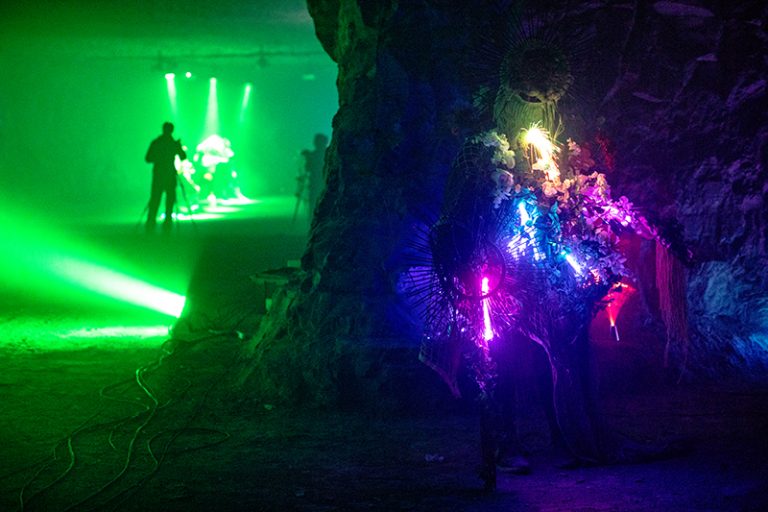
For the second consecutive year, Carnegie Mellon University students illuminated the dark corridors and winding passageways of a limestone mine with art installations, musical performances and costumed movement.
“SubSurface: Site-Specific Sight & Sound,” a one-hour interdisciplinary festival, drew about 250 attendees Saturday to the inactive mine in Brady’s Bend, Armstrong County. The mine is estimated to be twice the size of the world’s largest building.

The festival is a collaboration among students and faculty from CMU’s College of Fine Arts, School of Computer Science, the BXA Intercollege Degree Programs and Integrative Design, Arts and Technology (IDeATe) Network.
Students from Professor Scott Andrew’s Activated Anamorphs class added an interactive element to this year’s festival. Their movement-based performance and costumes reflected aspects of underground lifeforms or objects, such as angler fish, fossils and bats. The Activated Anamorphs moved in character to the music performed by IDeATe’s Exploded Ensemble and the musical group Bombici. The musicians, in turn, improvised in response to the movements. Students from Concept Studio: Space and Time also contributed inflatable, projected, shadow-based and mobile artworks.

“It’s about creating a surreal experience for a viewer that could maybe catapult them into another way of thinking,” said Andrew, a multimedia artist and adjunct professor in CMU’s School of Art. “It’s something that takes people out of their day-to-day life and gives them an exciting experience.”
Jesse Stiles, co-organizer and an assistant professor at CMU’s School of Music and IDeATe, said the limestone mine is a place where students can reinvent their landscape and themselves — altering how they sound and appear. The space also challenges students to rethink performance spaces and how music is presented.
“For students, the real educational value is that they are literally rethinking everything because there’s no infrastructure there for them,” Stiles said. “You have to rethink sound and articulation of sound. That’s a great musical exercise.”
The event was also covered in the Pittsburgh Post-Gazette, the Tribune-Review, and on WESA, Pittsburgh’s NPR station.




